Virgin Galactic crash: Descent system 'deployed early'
- Published
Christopher Hart, NTSB: "A couple of seconds after the move from lock to unlock, all the data stopped"
A safety device on the Virgin Galactic spacecraft that crashed on Friday, killing a test pilot, had been deployed early, US investigators have said.
Air safety chief Christopher Hart said the "feathering" device, designed to slow the craft on re-entry, activated without a command from the pilots.
But he said it was too soon to confirm any possible cause of the crash.
Media reports had focused on the fuel tanks and the engine, but Mr Hart said that both were found intact.
"We know as a matter of fact that the lever was moved from locked to unlocked," Mr Hart of the National Transportation Safety Board (NTSB) told the BBC.
"There are several links in the chain to find out what the total cause of this accident is," he added. "We have a lot we don't know."
Sir Richard Branson told BBC News claims about the rocket exploding were "quite hurtful"
The BBC's Richard Scott toured the spacecraft in 2011
Meanwhile, Virgin boss Sir Richard Branson accused a "handful of British newspapers" of publishing "wild accusations" over the crash.
He said initial findings from US investigators had shown reports that suggested problems with the fuel or engine had caused an explosion were "garbage".
"Rumours and innuendo from self-proclaimed experts can be put back in their box," he told the BBC.
Sir Richard said that he would not send tourists into space until he and his family members had made the trip. He described the accident as a "horrible setback".
Virgin Galactic had aimed to send tourists into space early next year, and has already taken more than 700 flight bookings at $250,000 (£156,000) each.

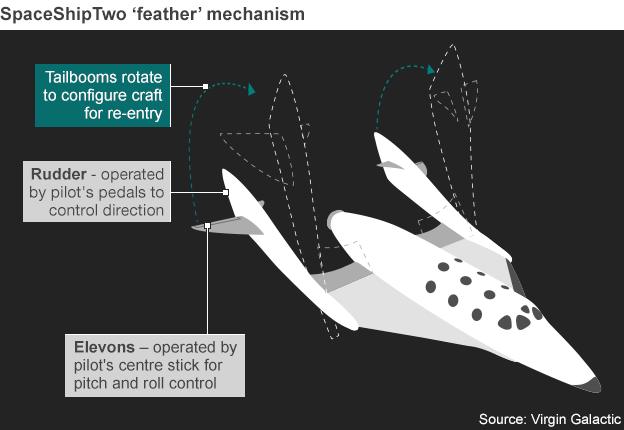
Analysis: Jon Amos, BBC science correspondent
In normal flight, the feathering device is deployed when the ship has reached its highest altitude, after the spaceship has broken through the atmosphere. The twin tailbooms on the craft are rotated 90 degrees, from the horizontal to the vertical.
The effect is to make the returning spaceship behave much like a shuttlecock.
As the air gets thicker on the descent and rushes over the booms, the drag on the vehicle means it naturally adopts a belly-down position ready for the glide back home - just as the feathers always ensure forward-facing flight for the conical projectile used in a game of badminton.
Feathering gets around the need for a complicated system of small thrusters that would otherwise be required to put the rocket plane into the correct re-entry attitude.
The system worked to great effect on the prototype SpaceShipOne when it made its flights to suborbital space 10 years ago.
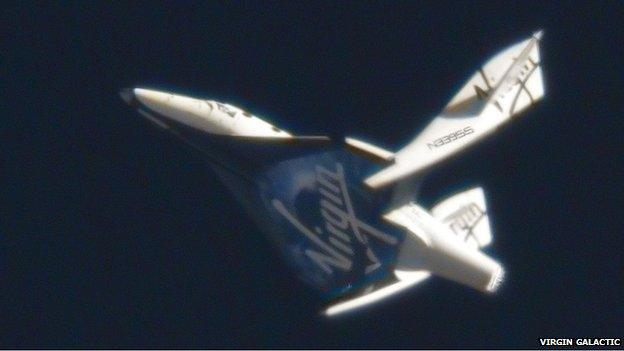
SpaceShipTwo with the tailbooms in the feathered position - from an earlier test outing

Mr Hart told reporters earlier that the feathering device was supposed to be activated at Mach 1.4 (1,065mph; 1,715km/h), but had been deployed at Mach 1 during the test flight.
He said one of the pilots had enabled the device, but the second stage of its deployment had happened "without being commanded".
"Shortly after the feathering occurred, the telemetry data terminated and the video data terminated," he said.

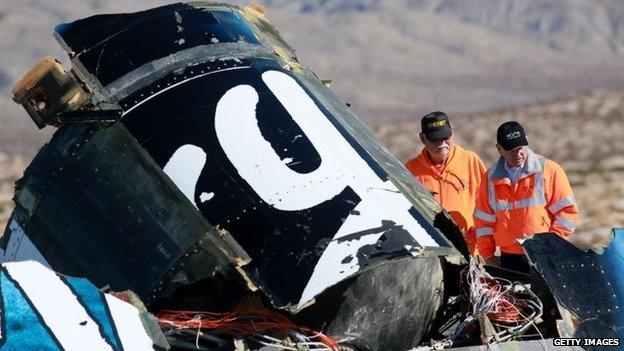
Investigators said the fuel tanks had not been compromised
The feathering device lifts and rotates the tail to create drag, slowing the craft on its descent.
He said SpaceShipTwo's fuel tanks and engine were found intact, without any sign of being breached.
NTSB investigators have now found almost all of the parts of the crashed spacecraft as part of an inquiry they say could take many months to complete.
SpaceShipTwo was making its first test flight for nine months when it crashed near the Californian city of Bakersfield.
Virgin Galactic said the craft experienced "a serious anomaly" after it separated from launch vehicle WhiteKnightTwo.
The spacecraft was using a new type of rocket fuel never before used in flight, although officials said it had undergone extensive ground testing.

The pilots
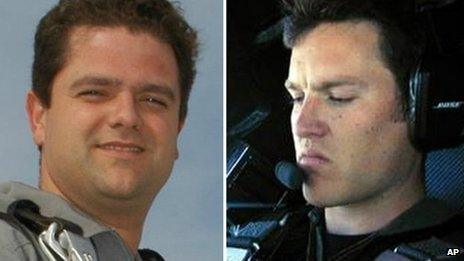
Peter Siebold, left, survived the incident but his co-pilot, Michael Alsbury, died
Michael Alsbury: Aged 39, 15 years of flying experience, first flew in SpaceShipTwo in 2010
Peter Siebold: Aged 43, received pilot's licence when just 16, had spent 2,000 hours in 35 different fixed-wing aircraft

The project has been subject to numerous delays, and its commercial launch has been pushed back several times.
The Financial Times reported, external that the venture is facing financial difficulties - with $400m in funding from Abu Dhabi now dried up and Virgin Group covering the day-to-day expenses.
The co-pilot who died when SpaceShipTwo disintegrated shortly after take-off was 39-year-old Michael Alsbury.
Scaled Composites, the company employing both pilots, said surviving pilot Peter Siebold, 43, was "alert and talking with his family and doctors".
- Published3 November 2014
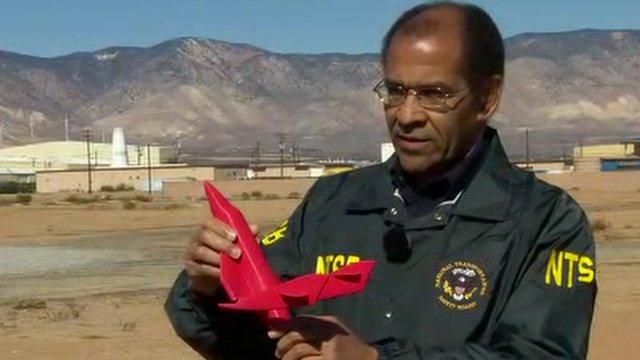
- Published3 November 2014
- Published3 November 2014
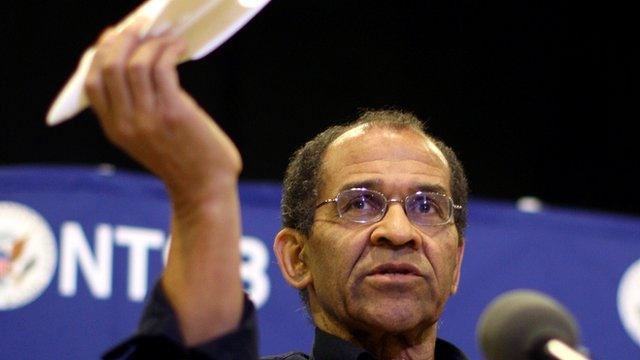
- Published3 November 2014
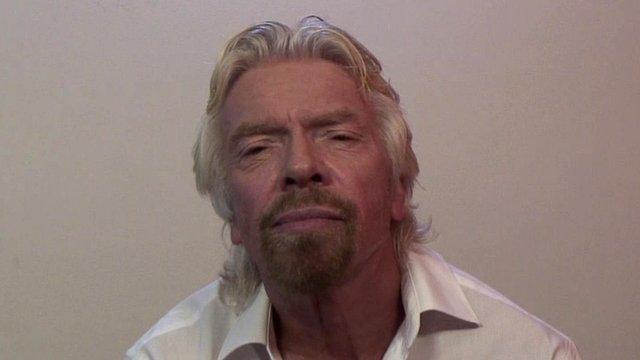
- Published31 March 2011
- Published31 October 2014
- Published1 November 2014
